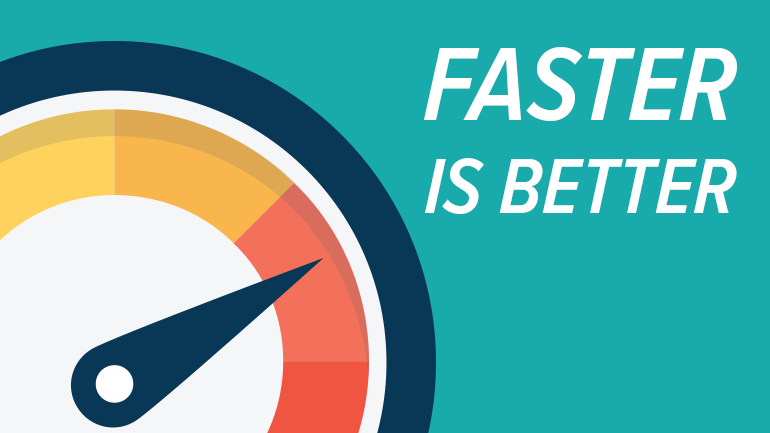
Why Site Speed is so important to e-commerce success
It’s essential to keep in mind that when it comes to online sales, we’re dealing with folks who either don’t have the time or aren’t motivated enough to go to a physical location.
When high-speed internet connections first became popular in 1999, people were ready to wait for a website to load for 8 seconds.
An Ecommerce website that is too slow and unresponsive will turn away customers since the average internet user will only accept a three-second load time.
No matter how beautiful your e-commerce website is, if it takes too long to load, you won’t get any sales from it. Today’s users associate efficiency, trust, and confidence with speed. There are several advantages to having a lightning-fast eCommerce website.
The Evolution of Page Load Time
People used dial-up modems to connect to the Internet in the late 1990s, and page load times ranged from 7 to 10 seconds. There have been enormous improvements in internet availability and speed in the US since the late 1990s. Internet consumers nowadays want and expect web pages to load in three seconds or less.
The Federal Communications Commission (FCC) is required by the Telecommunications Act of 1996 to produce reports for the American public on broadband deployment. Broadband Progress Report 8 shows that more than 80% of Americans have access to networks at speeds of 100 megabits per second.
Wireless carriers now commonly provide LTE access, which is substantially quicker than 2G or 3G connectivity—additionally, communications providers.
What Are the Benefits of a Faster Website?
Fast-loading websites provide the following advantages:
- A better overall experience for the customer
- Increasing website traffic results in obtaining more highly qualified prospects.
- A greater level of involvement
- Increasing site speed leads to better sales conversions
- If a website loads quickly, visitors will be less likely to bounce and more likely to convert. The speed of its website directly influences a company’s conversion rate. High-speed websites keep users longer, resulting in improved conversion rates. According to Google, a one-second boost in site performance may increase mobile conversions by as much as 27 percent.
- Time is money when it comes to eCommerce performance, so make your website faster. A whopping 18% of clients will give up on a purchase if the sites load slowly. Finally, the speed of your website has an impact on your advertising and other promotions since all of your advertising efforts will be for naught if your website is slow. Ecommerce conversion rates are higher for organizations with speedier websites. Conversions can drop by 7% if a page response is delayed by even one second.
- Improved Positions on Google – the speed of a website directly impacts its Google search engine rating. If your website is ranked highly, more people will find out about your business. Due to the negative impact that slow-loading websites have on user experience, Google has recently introduced site speed as a ranking criterion for search results.
- Enhance the User Experience: The happiness and conversion of customers are directly related to the speed of your site. Websites that take longer to load have a greater bounce rate and a shorter session duration. Thus, a pleasant user experience is essential. If a website takes too long to load, users will go elsewhere, which hurts conversion rates. When clients have confidence in an eCommerce site, it leads to increased repeat visitors. Over 40% of consumers will leave a site if it takes longer than two to three seconds to load their pages. Some of the most well-known websites in the world reported identical issues.
Boosting the Speed of Your E-Commerce Website
1) Switch to headless commerce
With headless commerce, you can speed up your site while also having greater control over your e-commerce design. In this case, APIs are used to connect microservices from different e-commerce software suppliers. Rather than having everything sent from a single server, as with classic monolithic e-commerce solutions, this allows for asynchronous loading of sites.
Teespring, an e-commerce site selling t-shirts and other items, increased conversions using a headless commerce solution. To aid with website load times, the distributed nature of the headless tech stack enables asynchronous loading of elements such as product and checkout pages.
2) Make use of instruments for measuring performance
You may use free tools to check your e-commerce site’s current performance. The information you’ll get from these tools will help you establish a benchmark for your site’s overall performance. You’ll also get a comprehensive list of tips on how to make your site run more smoothly.
The following tools are practical for e-commerce site performance testing:
- Stonethro
- PageSpeed Insights
- Pingdom
- GTmetrix
As a result, many online shops have performance monitoring teams that utilize technologies like New Relic to examine individual sites. As a mid-market or business shop, you should seriously explore this alternative.
The Faster, The Better!
The most prominent examples of quick websites giving a WOW experience are Google and Amazon, where one returns for more.
Even though your first consumer may not buy from your e-commerce platform, they will remember you because of the speedy service they receive. A competitive advantage is more likely to be sustained by an eCommerce website that offers a good consumer experience. Customers must be satisfied, and search engine results must be improved. And of course, we are in the business of improving e-commerce conversions.
Thus website speed is critical and should be consistently increased
Stonethro, bringing you one step closer to a faster Shopify store